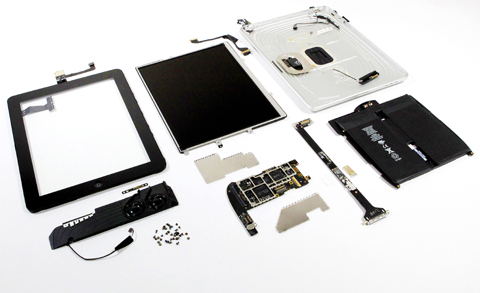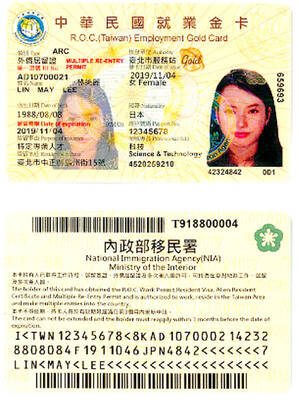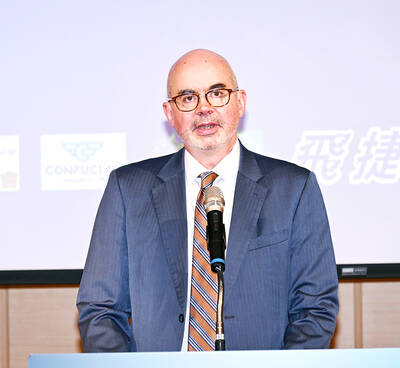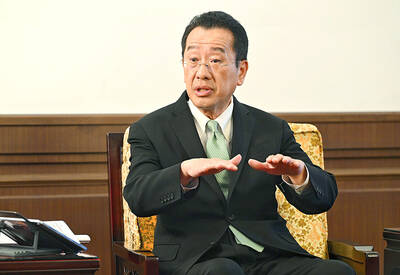Luke Soules was one of the first on the planet to get his hands on an iPad. And he wasted no time taking it apart.
After staking out three locations in the Eastern US, Soules — co-founder of teardown firm iFixit — cracked the device open on Saturday to unearth NAND flash memory by Samsung Electronics, an LCD display from LG Display and microchips from Broadcom Corp, Texas Instruments Inc and NXP Semiconductor.
Soules and his outfit provide and advise on components in Apple gadgets — and also identifies them. The work of teardown firms such as iFixit may prove crucial in identifying which manufacturer gets its parts into a device expected to sell upwards of 5 million units this year alone.

PHOTO: REUTERS
Soules had slept overnight in the parking lot outside an Apple mall store in Richmond, Virginia. He was the first to walk out of the store, moments after the outlet opened at 9am, iPad in hand.
Store employees clapped and gave him high-fives. He grinned, but moved quickly. There was work to do.
Without a second’s dawdling, Soules hopped in a waiting car and raced a few short kilometers to the house of a friend, where he had his tools of destruction ready to go. He barely paused to admire the iPad out of the box. He didn’t even turn it on.
The secretive Apple is famous for designing sealed-up devices intended to discourage nosy gadget heads from poking around in them, and the iPad was no different.
The iPad had no screws. But working with a tool called a spudger, it took Soules only 10 minutes to separate the iPad’s handsome, 24.6cm facing from its silver-backed casing.
He surveyed the iPad’s design, a maze of parts that would be utterly inscrutable to most people.
“That’s very, very nice,” he said almost reverentially.
Teardown firms are hired by an array of clients, their data used for competitive intelligence, in patent disputes or to keep current on industry benchmarks.
By 9:30am, Soules had turned the iPad inside out and was sharing its secrets with the world.
There is strong competition to be first to tear open Apple devices and reveal the design, chips and components within and iFixit has gained a measure of fame for their work.
Months of anticipation had built ahead of the iPad launch and — at least in technology circles — almost as much excitement about what’s on the inside of the device.
Within 45 minutes, iFixit had left the iPad — the gleaming symbol of Apple’s technological wizardry — in tatters, its various parts naked against a crisp white backdrop.
Soules moved at a rapid clip, narrating as he took pictures and streamed to colleague Kyle Wiens and others in California, who were posting them online and helping identify parts.
IFixit’s near-live teardowns have become staples for gadget fans during Apple product launches.
As a veteran of many previous efforts, Soules was prepared for any tricks Apple might throw his way, but the iPad didn’t prove to be too enormous of a challenge to take apart, as some previous devices have.
Soules had removed the main circuit board of the iPad by 10am. The 10.2cm long, 28g board was covered by an electromagnetic interference shield, and underneath were all the microprocessors that make the device tick.
“The vast majority of the brains of the iPad are on this little board. It’s amazing what they can fit into such a small space,” Soules said.
One of first identifiable parts was the NAND flash memory, which was made by Samsung, which has supplied components for other Apple devices. Soules also quickly noted chips from Broadcom and Texas Instruments.
There were also at least three chips carrying Apple branding. Apple is known to hide the identities of some chipmakers in its products by having them stamp an Apple logo on their parts. The main iPad chip is an Apple creation; its very own A4 processor controls the iPad’s programs.
IFixit determined that Samsung is manufacturing the A4 chip for Apple.
After removing the circuit board, Soules dug in further using a Torx screwdriver to manipulate the minuscule screws inside the iPad. His fingernails gingerly pried open casings.
“The teardown process is bit easier if I keep my fingernails on the long side,” he said.
Soules discovered the iPad’s battery is not soldered into place, which means that replacing it is possible for the do-it-yourself crowd.
IFixit promotes device repair as a means to cut down on electronic waste.
Apple requires users to mail iPad units back to the company, which will change the battery for a hefty fee.
By 10:45am Soules was cautiously fiddling with the iPad’s display, the most expensive component.
While he was unable to determine who made the display on his unit, another iFixit teardown at a different location revealed one from LG, meaning Apple could be using displays from more than one supplier.
Besides Richmond, iFixit had also ordered iPads at addresses near Indianapolis and Orlando, Florida. The company had people in both areas, home to FedEx shipping hubs.
IFixit thought it might be able to get a few hours jump on the competition by staking out the FedEx hubs the morning of the launch, to intercept one of the devices.
But that didn’t pan out, so they resorted to standing in line — at the head of the line actually — in three cities.
The Federal Communications Commission also managed to steal at least some of iFixit’s thunder.
Bloggers discovered on Friday that the FCC had posted pictures of the insides of pre-production iPads on its Web site, even though Apple had requested that they keep them confidential.
IFixit spent much of the night identifying the parts, which were not necessarily the same as those in real iPads.
By noon on Saturday, the bulk of the iPad teardown was done. But there will be at least another week of analysis, using sophisticated equipment that can cut into components to determine how they were made, and who made them.

GAINING STEAM: The scheme initially failed to gather much attention, with only 188 cards issued in its first year, but gained popularity amid the COVID-19 pandemic Applications for the Employment Gold Card have increased in the past few years, with the card having been issued to a total of 13,191 people from 101 countries since its introduction in 2018, the National Development Council (NDC) said yesterday. Those who have received the card have included celebrities, such as former NBA star Dwight Howard and Australian-South Korean cheerleader Dahye Lee, the NDC said. The four-in-one Employment Gold Card combines a work permit, resident visa, Alien Resident Certificate (ARC) and re-entry permit. It was first introduced in February 2018 through the Act Governing Recruitment and Employment of Foreign Professionals (外國專業人才延攬及雇用法),

RESILIENCE: Deepening bilateral cooperation would extend the peace sustained over the 45 years since the Taiwan Relations Act, Greene said Taiwan-US relations are built on deep economic ties and shared values, American Institute in Taiwan (AIT) Director Raymond Greene said yesterday, adding that strengthening supply chain security in critical industries, enhancing societal resilience through cooperation and deepening partnerships are key to ensuring peace and stability for Taiwan in the years ahead. Greene made the remarks at the National Security Youth Forum, organized by National Taiwan University’s National Security and Strategy Studies Institution in Taipei. In his address in Mandarin Chinese, Greene said the Taiwan-US relationship is built on deep economic ties and shared interests, and grows stronger through the enduring friendship between

CAUTION URGED: Xiaohongshu and Douyin — the Chinese version of TikTok — are tools the Chinese government uses for its ‘united front’ propaganda, the MAC said Mainland Affairs Council (MAC) Minister Chiu Chui-cheng (邱垂正) yesterday urged people who use Chinese social media platforms to be cautious of being influenced by Beijing’s “united front” propaganda and undermining Taiwan’s sovereignty. Chiu made the remarks in response to queries about Chinese academic Zhang Weiwei (張維為) saying that as young Taiwanese are fond of interacting on Chinese app Xiaohongshu (小紅書, known as RedNote in English), “after unification with China, it would be easier to govern Taiwan than Hong Kong.” Zhang is professor of international relations at Shanghai’s Fudan University and director of its China Institute. When giving a speech at China’s Wuhan

ENHANCE DETERRENCE: Taiwan has to display ‘fierce resolve’ to defend itself for China to understand that the costs of war outweigh potential gains, Koo said Taiwan’s armed forces must reach a high level of combat readiness by 2027 to effectively deter a potential Chinese invasion, Minister of National Defense Wellington Koo (顧立雄) said in an interview with the Chinese-language Liberty Times (sister newspaper of the Taipei Times) published yesterday. His comments came three days after US Secretary of State Marco Rubio told the US Senate that deterring a Chinese attack on Taiwan requires making a conflict “cost more than what it’s worth.” Rubio made the remarks in response to a question about US policy on Taiwan’s defense from Republican Senator John Cornyn, who said that Chinese